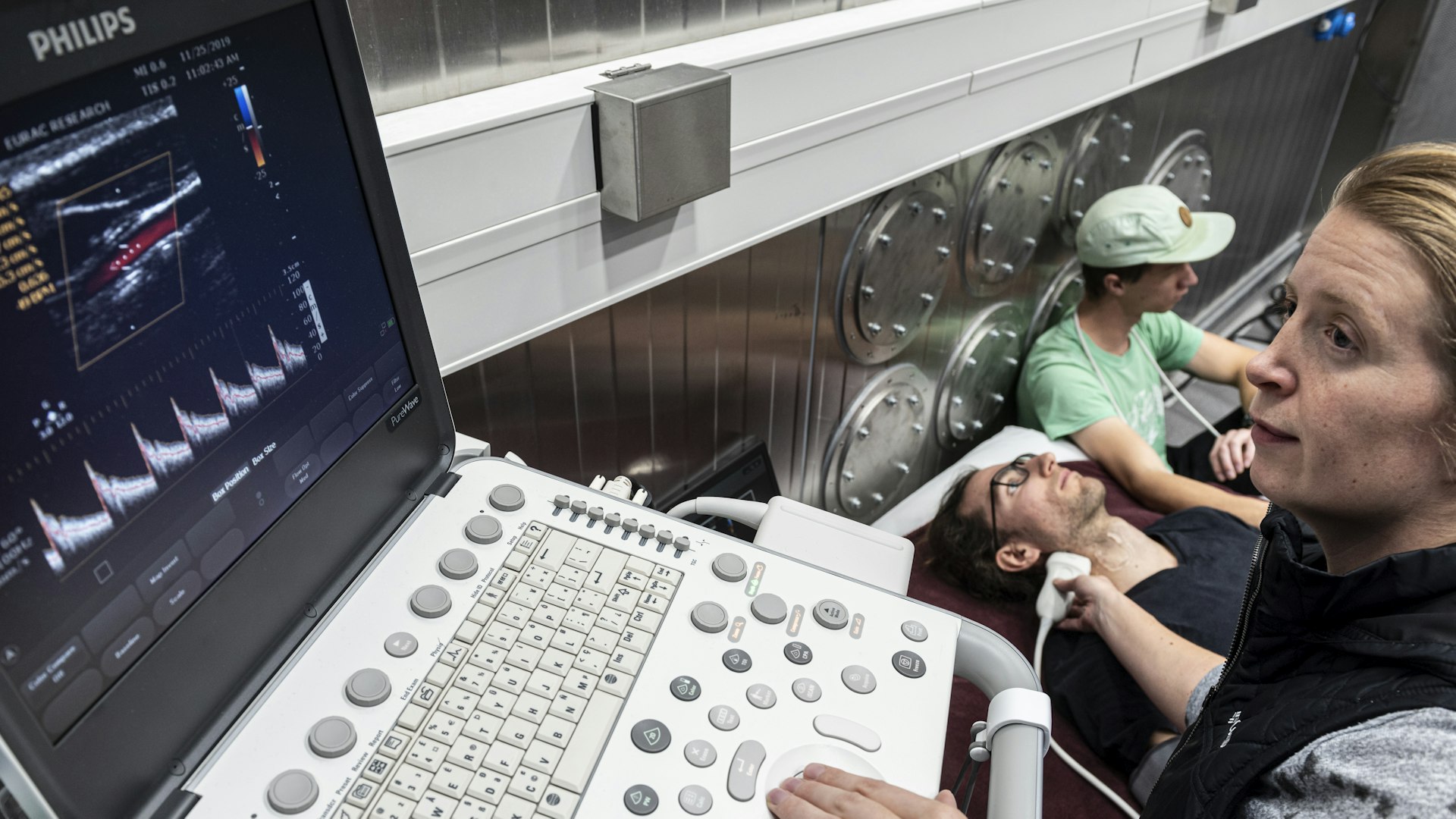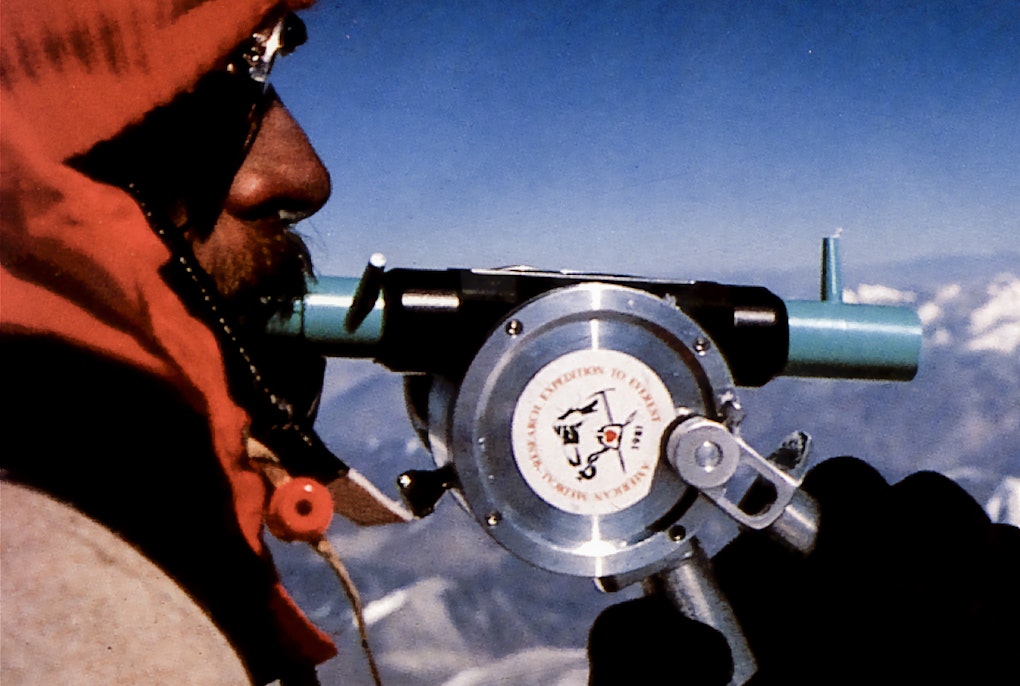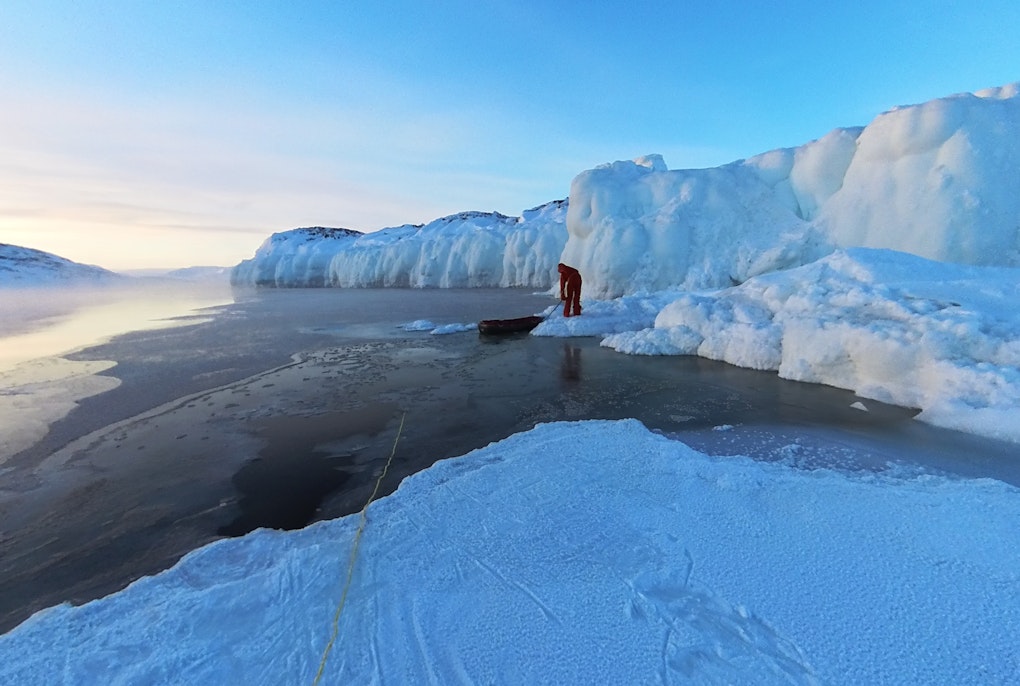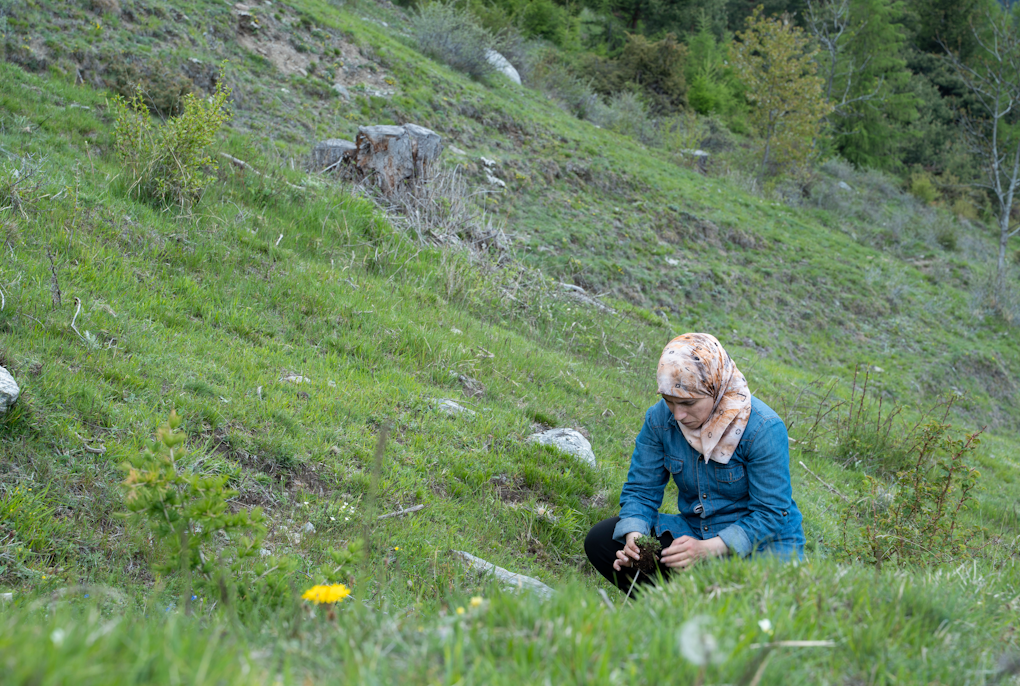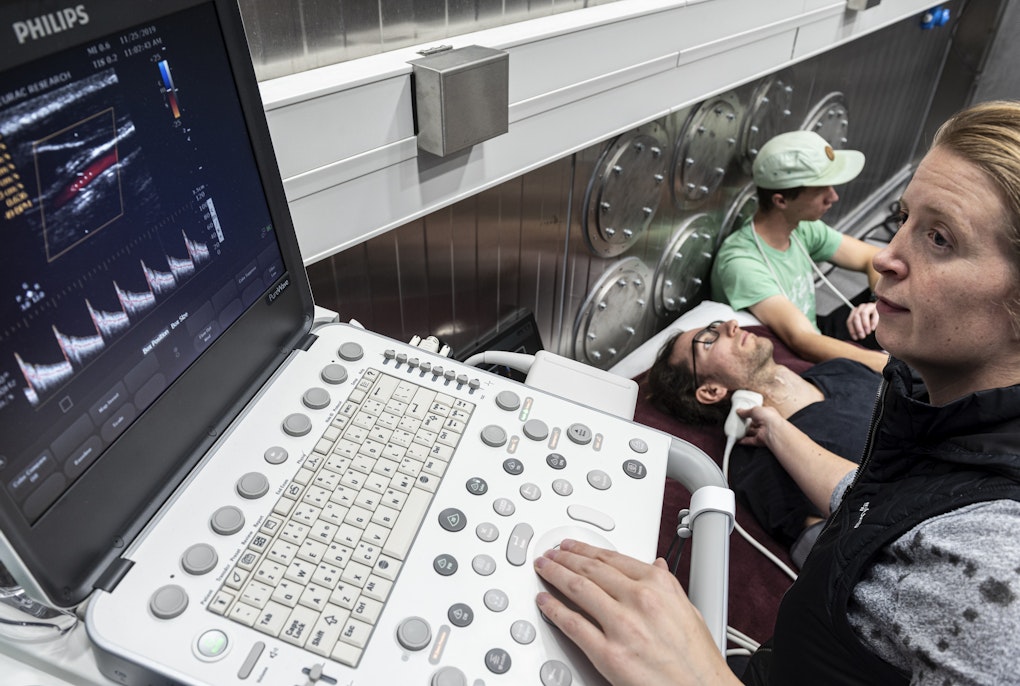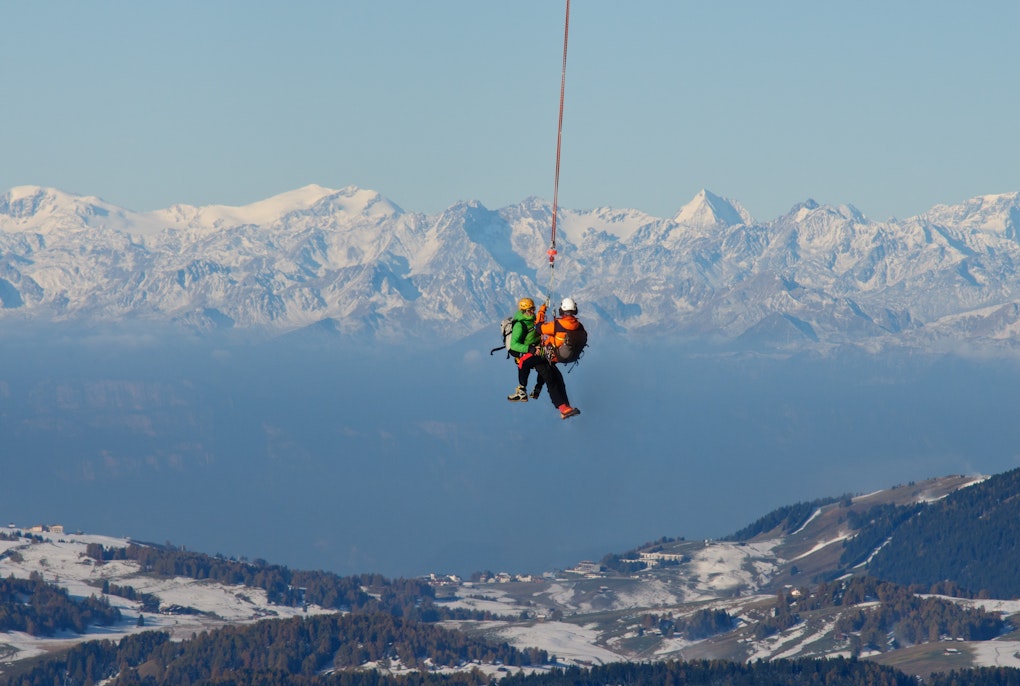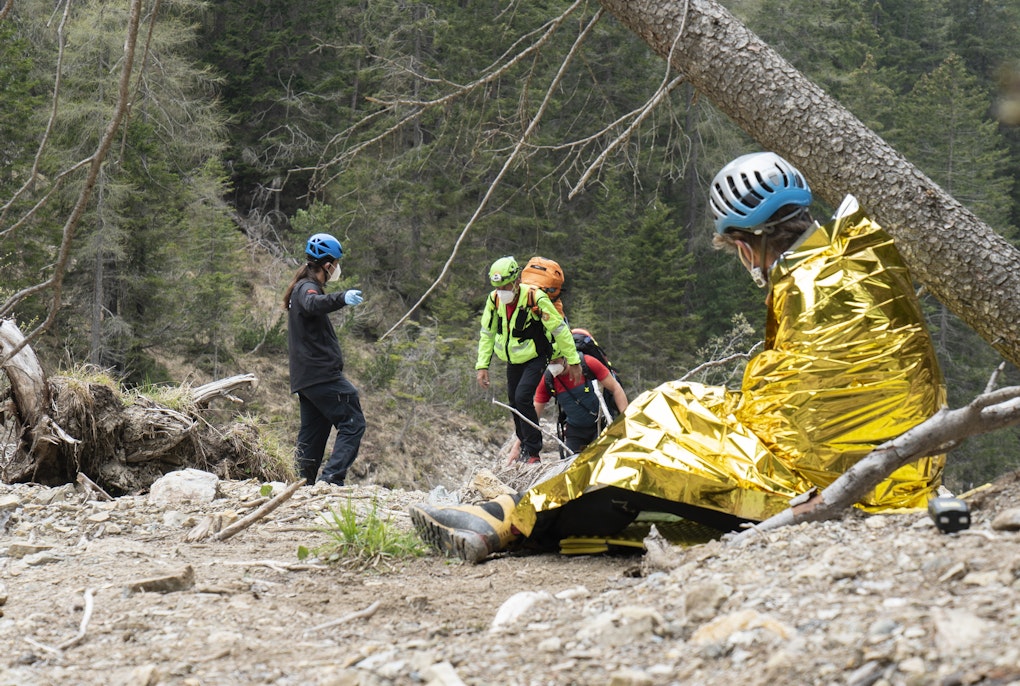For years it has been known that the blood changes at higher altitudes. However, in high-altitude medicine, conflicting explanations have been given for the mechanisms behind this transformation. Studies at high altitude are often affected by interfering factors: people eat, drink and sleep differently in the mountains, compared with the lowlands. In the terraXcube, our centre for simulating extreme climates, a research team has analysed how the concentration of the liquid part of the blood (plasma) changes with altitude under standardised conditions.
New opportunities for high-altitude medicine
Comfortably furnished rooms with beds, tables, chairs, game consoles, food and drink - the eleven study participants had to feel as comfortable as possible during their stay in the terraXcube. The study, one of the first to be carried out in the terraXcube extreme climate simulation centre, was undertaken by the team of researchers to investigate some of the mechanisms that the human body uses to adapt to altitude. As altitude increases, air pressure decreases, and less oxygen is available to us (hypoxia). To compensate for this, our heartbeat and our breathing rate increase, the consistency of our blood also changes, as plasma, the liquid component of the blood, decreases. This mechanism is extremely efficient: the volume of plasma decreases, and the concentration of red blood cells increases, allowing each litre of blood to carry more oxygen. What controls this mechanism? The answers given over the years by various studies have been varied. While some suggest that fluid loss through increased diuresis is the cause,, others maintain the theory of a redistribution of fluid. The contradictory results of earlier studies could be because test subjects eat and drink differently in the mountains, they often change their physical activity and do not sleep as deeply as at lower altitudes. In addition, it is usually colder at altitude, which can also influence functions in our body. However, since the study was undertaken inside the terraXcube, the team was able to eliminate all these potential hindrances and specifically focus on the effects of the reduced oxygen availability at altitude.
With our climate simulator we can control environmental conditions precisely, therefore enabling standardised comparisons. This is also what makes this study so interesting.
Head of the study and high-altitude physiologist Christoph Siebenmann
The participants were housed in the terraXcube on two separate occasions, for four days and four nights both times. During one stay, the barometric pressure corresponded to that of Bolzano (about 250 metres above sea level) and during the other, the barometric pressure was reduced to the equivalent of 3,500 metres altitude. Within the cube the temperature and humidity were identical. The research team also controlled participant’s food and liquid intake, ensured they slept in the same way and that their physical activity was consistent. Consequently, except for the air pressure and hence the availability of oxygen, all other parameters were identical. During the tests, researchers measured plasma volume and examined the various mechanisms that regulate it. "With our climate simulator we can control environmental conditions precisely, therefore enabling standardised comparisons. This is also what makes this study so interesting," emphasised head of the study and high-altitude physiologist Christoph Siebenmann.
The result: no altitude diuresis
It has previously been assumed by the majority of high-altitude medicine experts that plasma volume reduction is controlled by the kidneys in a process called high-altitude diuresis , i.e.an increase in urine excretion at high altitude. In the terraXcube study, however, the participants showed no increased diuresis at altitude. Siebenmann's team was able to observe that the reduction of plasma in the blood is not controlled by the kidneys but instead by the proteins in the blood. Blood proteins control the amount of plasma in the blood vessels. During acclimatisation in the terraXcube, some of these proteins disappeared: As a results, a part of the plasma left the blood vessels and the red blood cell concentration in the blood increased. "The reduction in plasma volume in our study was not caused by a loss of fluid, as we expected, but rather by a redistribution of fluid," Siebenmann explains. The study in the climate simulator represents a major step forward for research because it has shown how fluid escapes from the blood vessels and flows into the extravascular space that surrounds the vessels. Although there had been some indications to this effect in the past, the theory could never be confirmed by such reliable data. "Our findings are not only significant for life at high altitude. Hypoxia also affects other diseases and by studying the effects of altitude on our bodies, we can contribute to a better understanding of the symptoms of such diseases.” Summarises Siebenmann.
More oxygen in the red blood cells: two different mechanisms, one goal
Lack of oxygen at high altitudes not only makes physical exercise more strenuous but, in some cases, causes various forms of mountain sickness that can be life-threatening. However, the body knows how to help itself acclimatise by increasing the concentration of oxygen-carrying red cells in the blood thus restoring the oxygen content of the arterial blood to normal. One of the mechanisms behind this process is a decrease in the plasma volume, described in the previous section, the second mechanism is the formation of new red blood cells, a process that requires several weeks. This phenomenon is also discussed in sporting contexts: Some athletes expect training at high altitude to improve performance in endurance sports through stimulation of red blood cell production. The process is controlled by a hormone produced in the kidneys called erythropoietin or EPO. In contrast, the reduction in plasma volume occurs much more rapidly: this mechanism starts at an altitude of approximately 2,000 metres. Most of the plasma 'disappears' from the blood within the first 24 hours, after which the reduction slows down and after a few days at altitude, the plasma volume usually stabilises at 80-90 per cent of the initial volume. At altitudes of up to 4,500 metres above sea level, this process allows the body to normalise oxygen levels in arterial blood within a few days.
